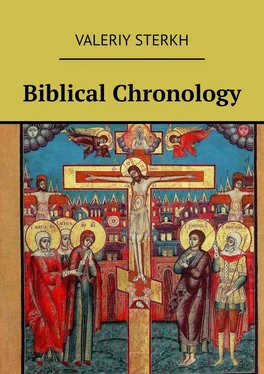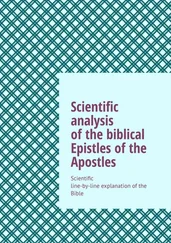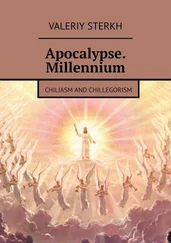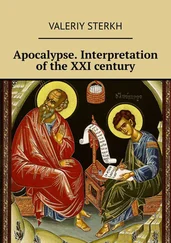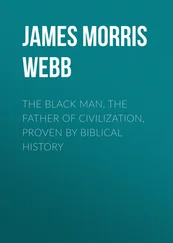6) The idea that the Jewish-Masoretic Tanakh is an infallible text of the original Old Testament is, obviously, erroneous. There’s enough evidence to the fact that the Jews had several versions of Tanakh with varying chronological data. For example, in the account from Adam through Noah, the Samaritan-Israelite Pentateuch is closer to the Jewish-Masoretic Tanakh, whereas in the partition from Arphaxad through Abraham it is closer to the chronology given in the Septuagint. This indicates an evolutionary accumulation of discrepancies over a long period of time.
7) Accumulation of errors in the Tanakh continued throughout the1st century NE. The Jewish historian Josephus Flavius in his famous book provides the chronological data in the Bible which contains further discrepancies (see Judean Antiquities).
8) The belief in the infallibility of the Jewish-Masoretic Tanakh faded away altogether after the ancient Jewish manuscripts of Qumran had been unearthed in 1947. These manuscripts reflect a whole range of chronological and textual traditions. Based on the paleographic data, external evidence, and the radiocarbon analysis, the main body of these manuscripts date between 250 BNE to 68 NE.
9) The finalization of chronology in the Jewish Tanakh occurred, most likely, around the 2nd century NE. This process must have been caused by historical circumstances, such as the destruction of the Jewish Temple, and the Roman invasion of Judea in 70 NE. Scattered throughout the world, the Jews must have been motivated to start thinking about preserving the uniformity of their religious texts. The fixed Jewish-Masoretic text of Tanakh was first translated into a foreign language in Syria at the end of the 2nd century NE. This translation was later called Peshitta. After some time, in the 4th century NE, the Jewish-Masoretic Tanakh was translated by into Latin by Jerome of Stridon; this translation was termed the Vulgate.
10) The fixed text of the Jewish-Masoretic Tanakh is not identical across various manuscripts and contains multiple discrepancies.
11) The much shorter chronology of the Jewish Tanakh contradicts the current data obtained through independent dating methods. For example, according to the Jewish tradition, the conquest of the Babylonian Empire by Cyrus II happened in 370 BNE (year 3390 from the foundation of the world in the Jewish calendar). But the scientific dating places this event in 539 BNE.
Based on the above considerations, it seems reasonable to use the dates and numbers of the Septuagint as the source for recreating the Old Testament chronology.
The brief research given below is not meant to demonstrate the whole range of the Old Testament datings. Its main purpose is to indicate the general duration of the described events. That’s why only key dates have been included. Let us first note that the period from the creation of the world to the beginning of the new era was 5550 years. So for the sake of convenience, the calculated dates are given in a twofold format: first, the dates from Adam, then the astronomical dates in NE (in parentheses; -5549 NE corresponds to 5550 BNE and so on).
1 (-5549). Creation of Adam and Eve
“So God created man in his own image, in the image of God created he him; male and female created he them… And the evening and the morning were the sixth day” (Gen 1:27, 31; compare Gen 2:7—25).
“And Adam called his wife’s name Eve; because she was the mother of all living” (Gen 3:20).
The tradition holds that the first man and woman, Adam and Eve, were created on the sixth days of the 1st year. It is believed that this day was Friday.
231 (-5319). The birth of Seth
“And Adam lived an 230 years, and begat a son in his own likeness, after his image; and called his name Seth” (Gen 5:3).
1+230=231
436 (-5114). The birth of Enos
“And Seth lived an 205 years, and begat Enos” (Gen 5:6).
231+205=436
626 (-4924). The birth of Cainan
“And Enos lived 190 years, and begat Cainan” (Gen 5:9).
436+190=626
796 (-4754). The birth of Mahalaleel
“And Cainan lived 170 years, and begat Mahalaleel” (Gen 5:12).
626+170=796
961 (-4589). The birth of Jared
“And Mahalaleel lived 165 years, and begat Jared” (Gen 5:15).
796+165=961
1123 (-4427). The birth of Enoch
“And Jared lived an 162 years, and he begat Enoch” (Gen 5:18).
961+162=1123
1288 (-4262). The birth of Methuselah
“And Enoch lived 165 years, and begat Methuselah” (Gen 5:21).
1123+165=1288
1475 (-4075). The birth of Lamech
“And Methuselah lived an 187 years, and begat Lamech” (Gen 5:25).
1288+187=1475
1663 (-3887). The birth of Noah
“And Lamech lived an 188 years, and begat a son: And he called his name Noah” (Gen 5:28—29).
1475+188=1663
2163 (-3387). The birth of Sim, Ham, and Japheth
“And Noah was 500 years old: and Noah begat Shem, Ham, and Japheth” (Gen 5:32).
1663+500=2163
2263 (-3287). The Great Flood
“And Noah was 600 years old when the flood of waters was upon the earth” (Gen 7:6).
The Flood happened 100 years after the birth of Sim, Ham and Japheth.
2163+100=2263
2265 (-3285). The birth of Arphaxad
“Shem was an hundred years old, and begat Arphaxad 2 years after the flood” (Gen 11:10).
The conjecture eliminates the contradiction between Gen 5:32, Gen 7:6 and Gen 11:10. This numeral was probably lost in the process of copying the manuscript long before the Septuagint was created. It is also absent in the Jewish-Masoretic Torah.
2263+2=2265
2400 (-3150). The birth of Cainan
“And Arphaxad lived 135 years, and begat Cainan” (Gen 11:12).
2265+135=2400
2530 (-3020). The birth of Salah [Sala]
“And Cainan lived 130 years, and begat Salah” (Gen 11:12).
2400+130=2530
2660 (-2890). The birth of Eber
“And Salah lived 130 years, and begat Eber” (Gen 11:14).
2530+130=2660
2794 (-2756). The birth of Peleg
“And Eber lived 134 years, and begat Peleg” (Gen 11:16).
2660+134=2794
2924 (-2626). The birth of Reu
“And Peleg lived 130 years, and begat Reu” (Gen 11:18).
2794+130=2924
3056 (-2494). The birth of Serug
“And Reu lived 132 years, and begat Serug” (Gen 11:20).
2924+132=3056
3186 (-2364). The birth of Nahor
“And Serug lived 130 years, and begat Nahor” (Gen 11:22).
3056+130=3186
3265 (-2285). The birth of Terah
“And Nahor lived 79 years, and begat Terah” (Gen 11:24).
3186+79=3265
3335 (-2215). The birth of Abram, Nahor, and Haran
“And Terah lived 70 years, and begat Abram, Nahor, and Haran” (Gen 11:26).
3265+70=3335
3435 (-2115). The birth of Isaac
“And Abraham was an 100 years old, when his son Isaac was born unto him” (Gen 21:5).
3335+100=3435
3495 (-2055). The birth of Esau and Jacob
“And Isaac was 60 years old when she [Rebekah] bare them [Esau and Jacob]” (Gen 25:26).
3435+60=3495
3625 (-1925). The Jews move to Egypt
“And Pharaoh said unto Jacob, How old art thou? And Jacob said unto Pharaoh, The days of the years of my pilgrimage are an 130 years” (Gen 47:8—9).
3495+130=3625
4055 (-1495). The Exodus from Egypt
“Now the sojourning of the children of Israel, who dwelt in Egypt , was 430 years” (Ex 12:40).
Some translations contain the conjecture , perhaps wishing to avoid the contradiction with the prophecy: “And he said unto Abram, Know of a surety that thy seed shall be a stranger in a land that is not theirs, and shall serve them; and they shall afflict them 400 years” (Gen 15:13). Actually, this correction in not necessary in Ex 12:40. It’s reasonable to assume that the first 30 years in Egypt there was no oppression for the Jews. The remaining 400 years, however, were spent in slavery. There’s a certain logic to this. After his arrival in Egypt, Abraham came into the presence Pharaoh and was received with honor: “And Pharaoh commanded his men concerning him: and they sent him away, and his wife, and all that he had” (Gen 12:20). He was a rich man: “And Abram was very rich in cattle, in silver, and in gold” (Gen 13:2). The Bible clearly indicates that Abraham was a slave owner, not a slave: “And he entreated Abram well for her sake: and he had sheep, and oxen, and he asses, and menservants, and maidservants, and she asses, and camels” (Gen 12:16).
Читать дальше
